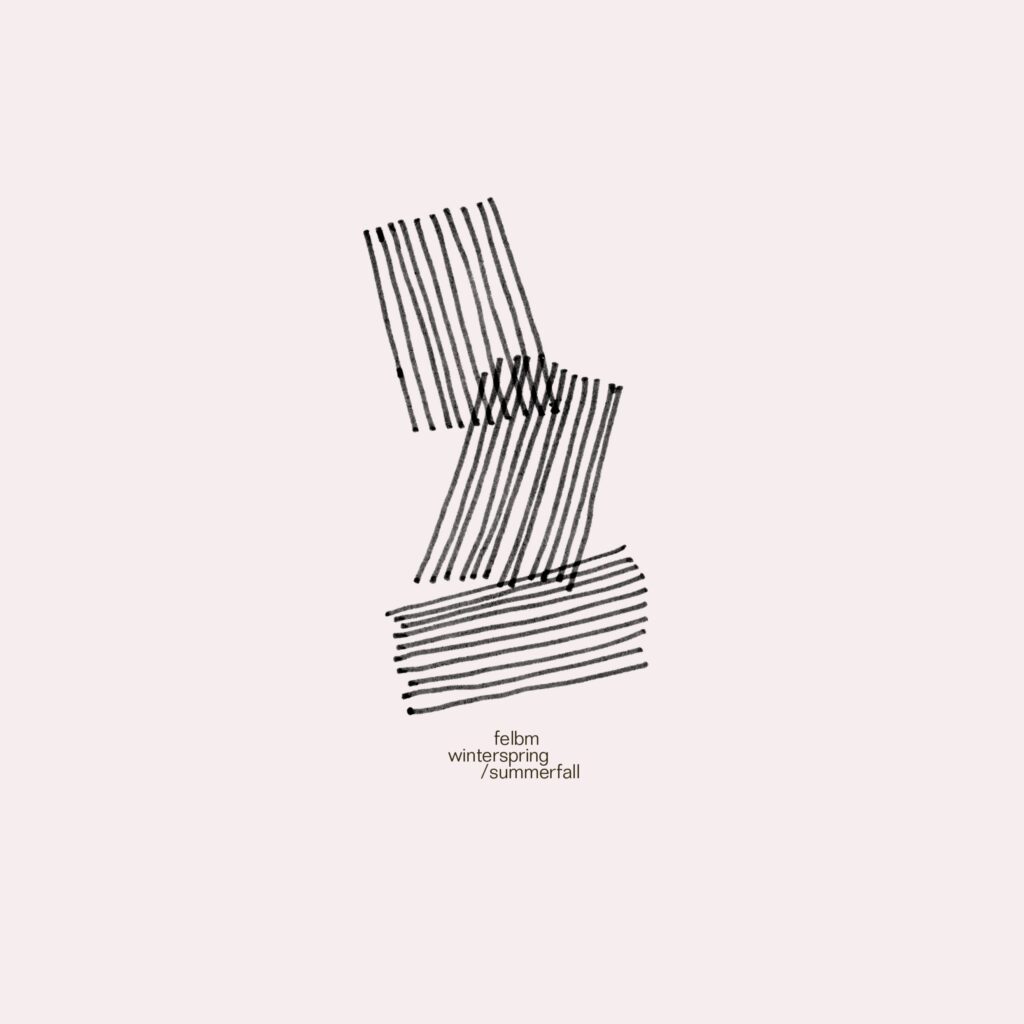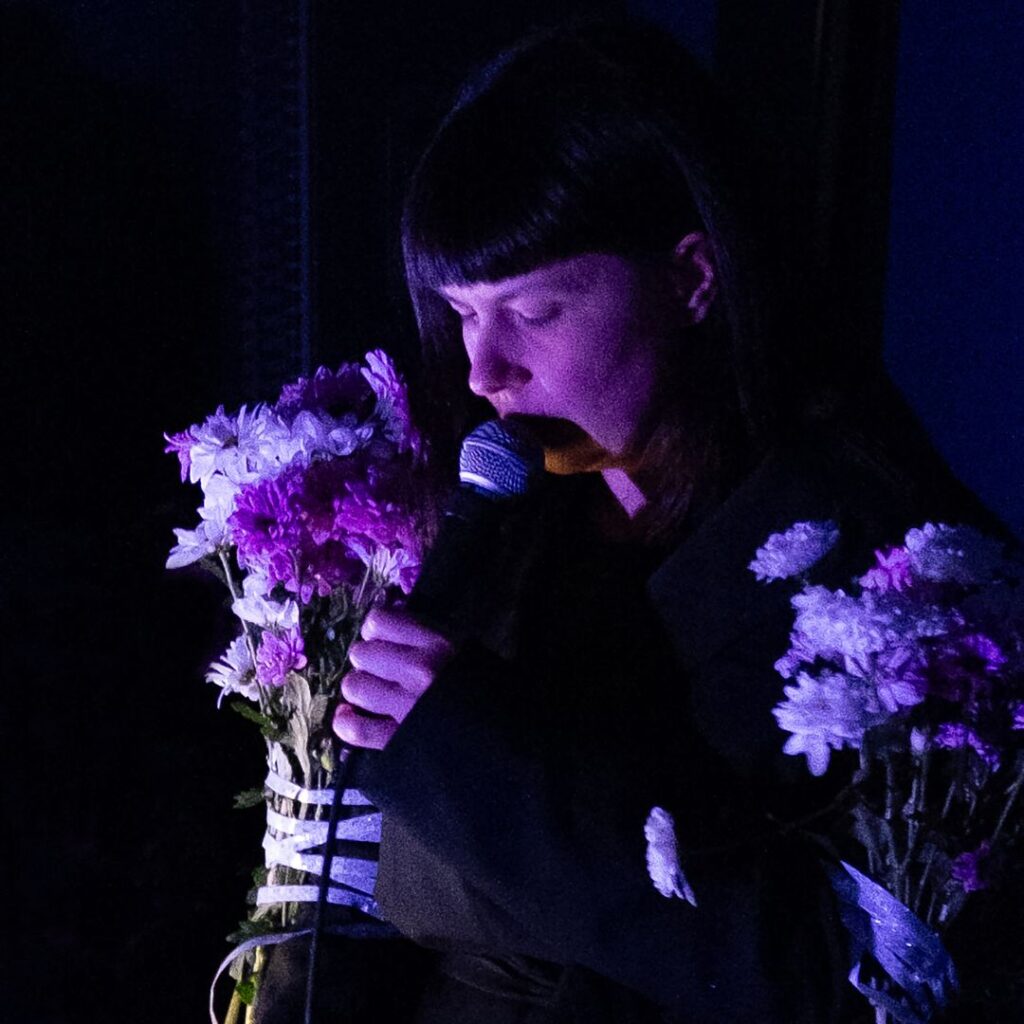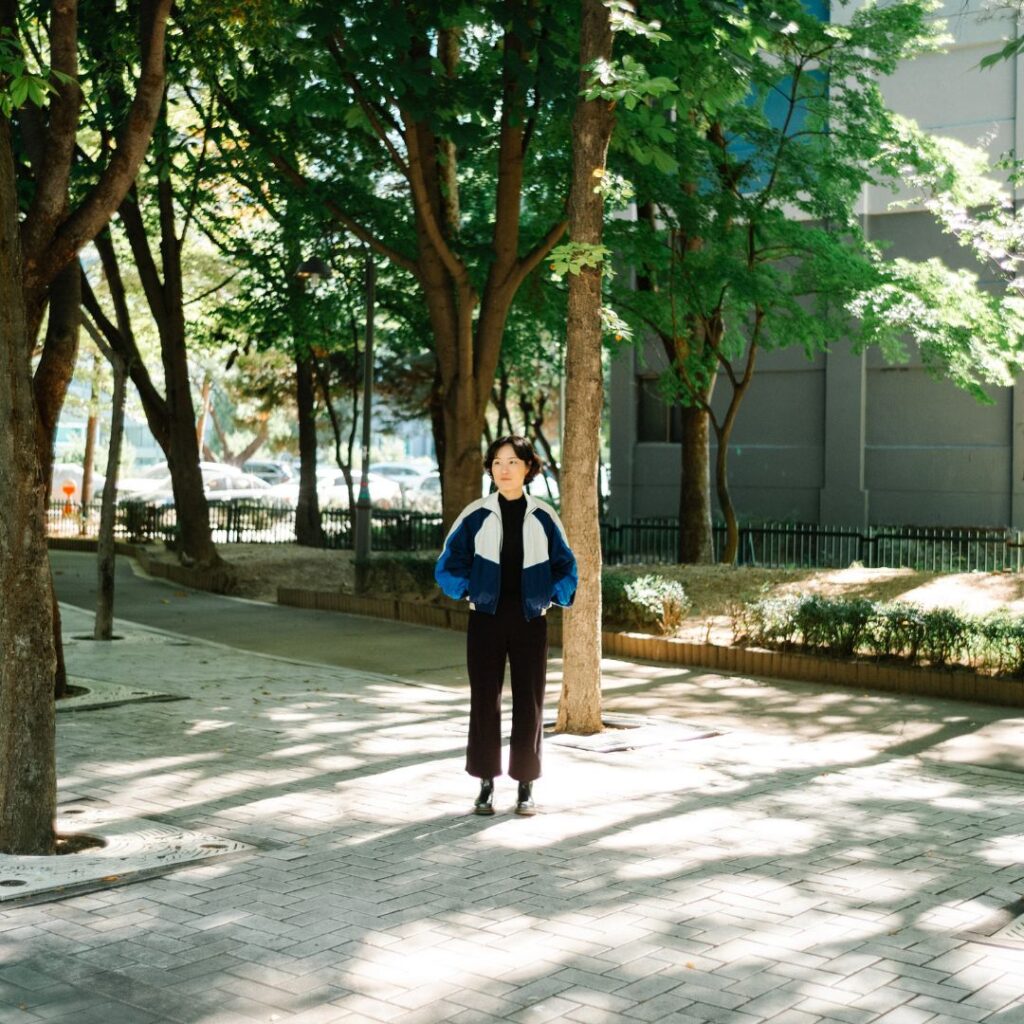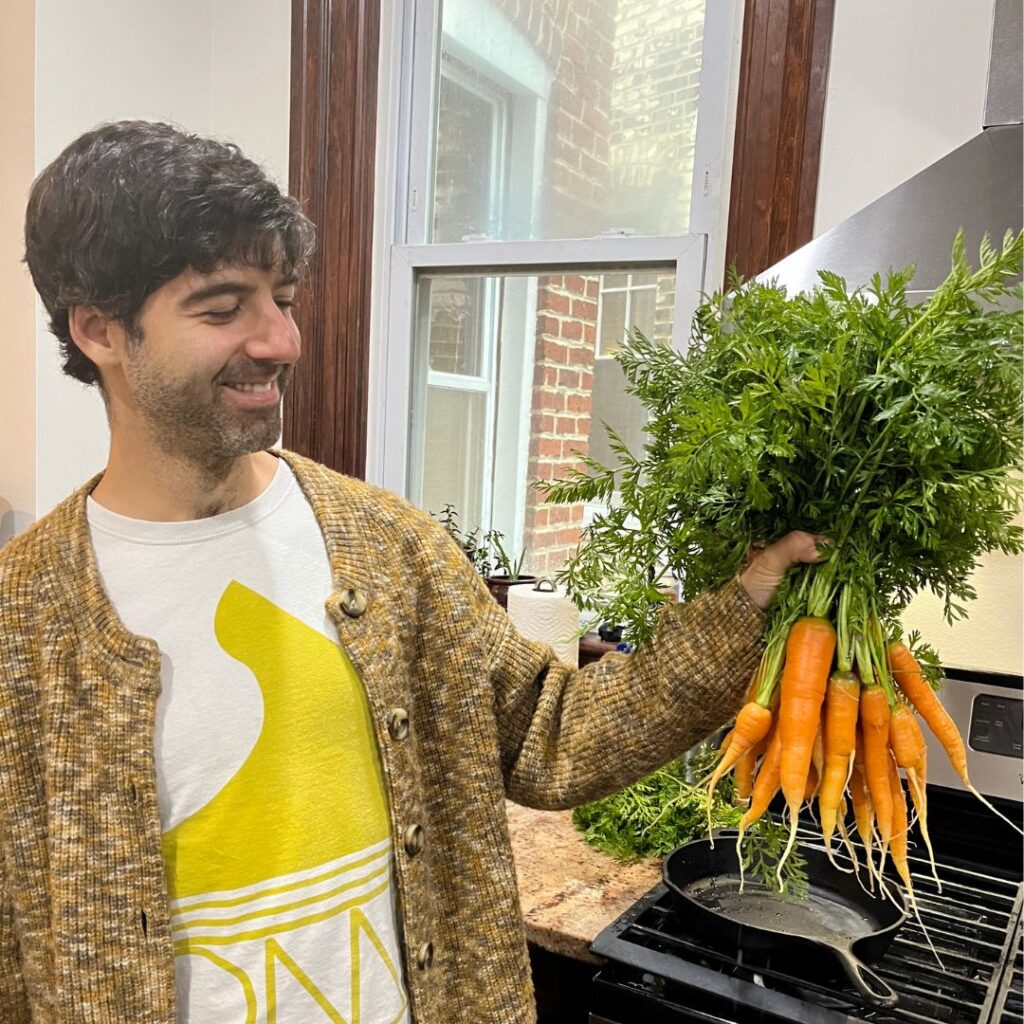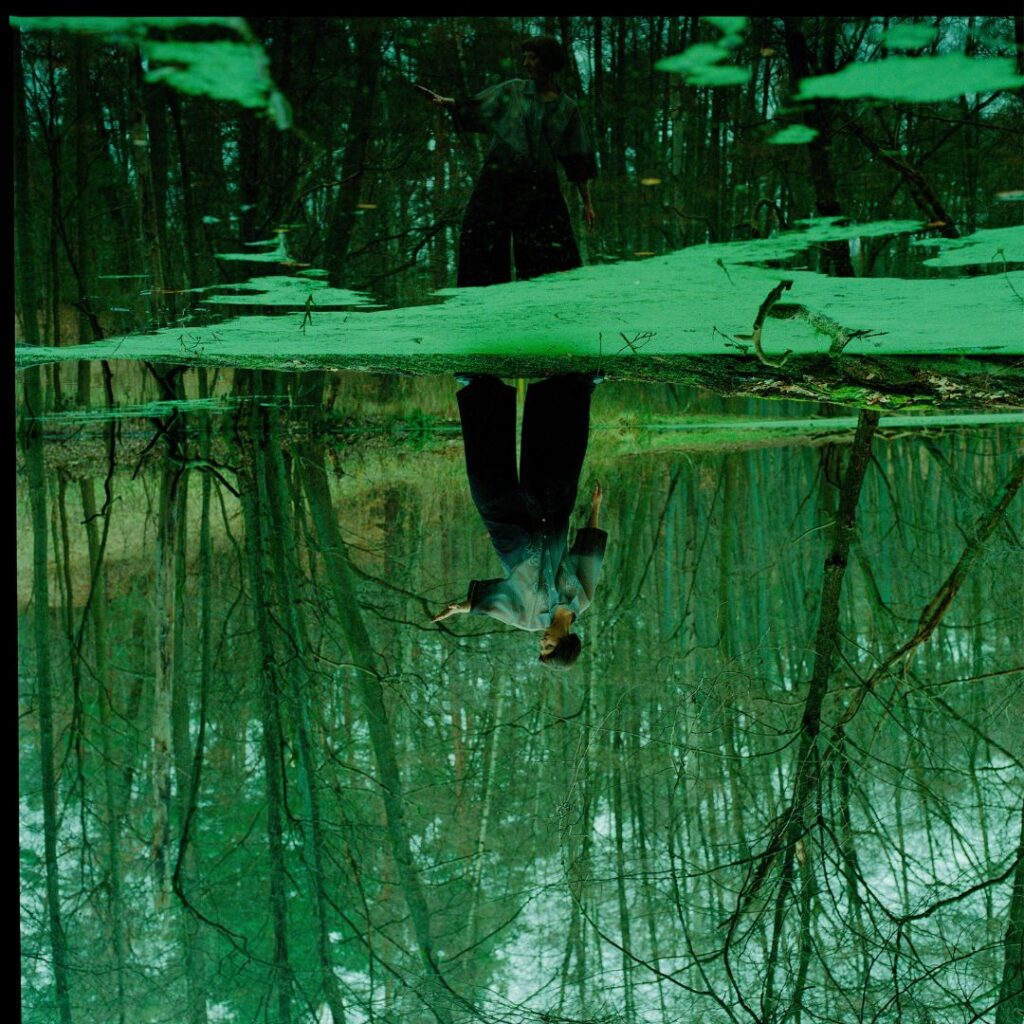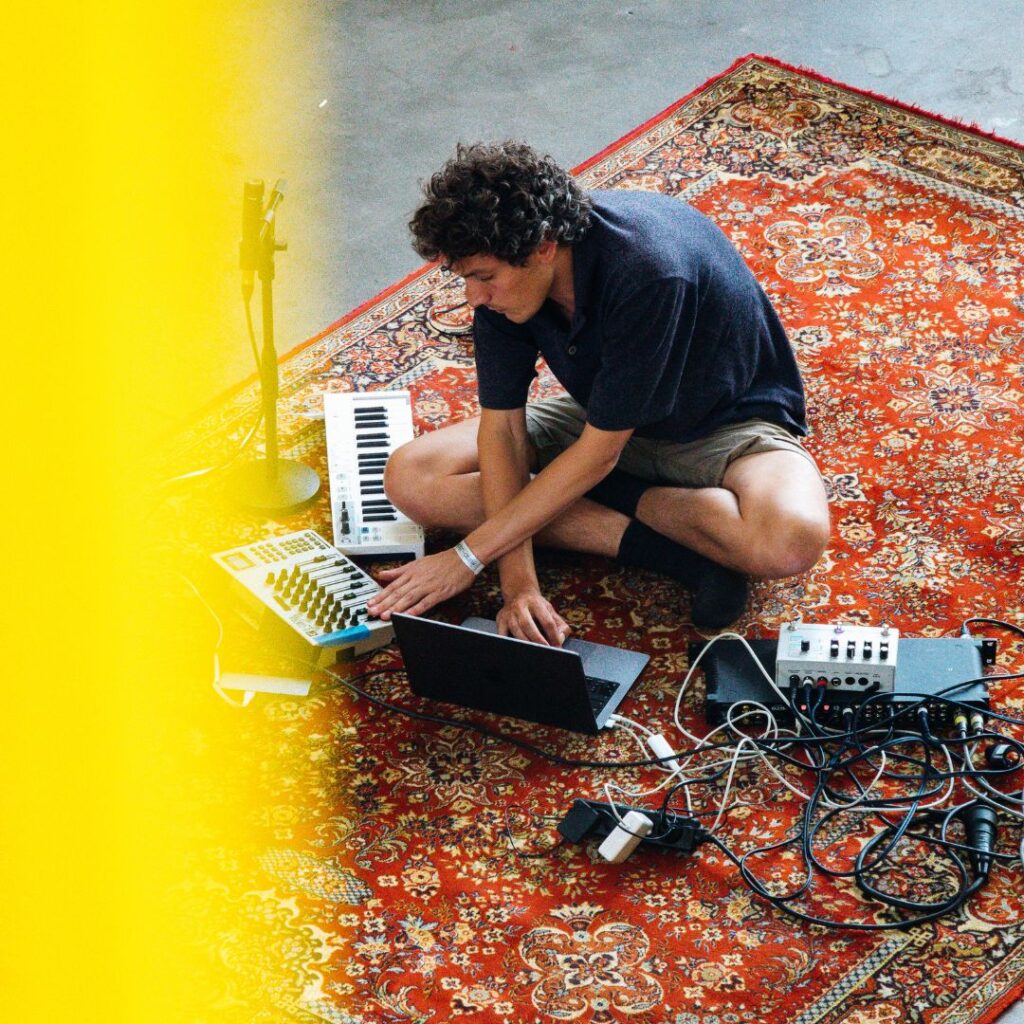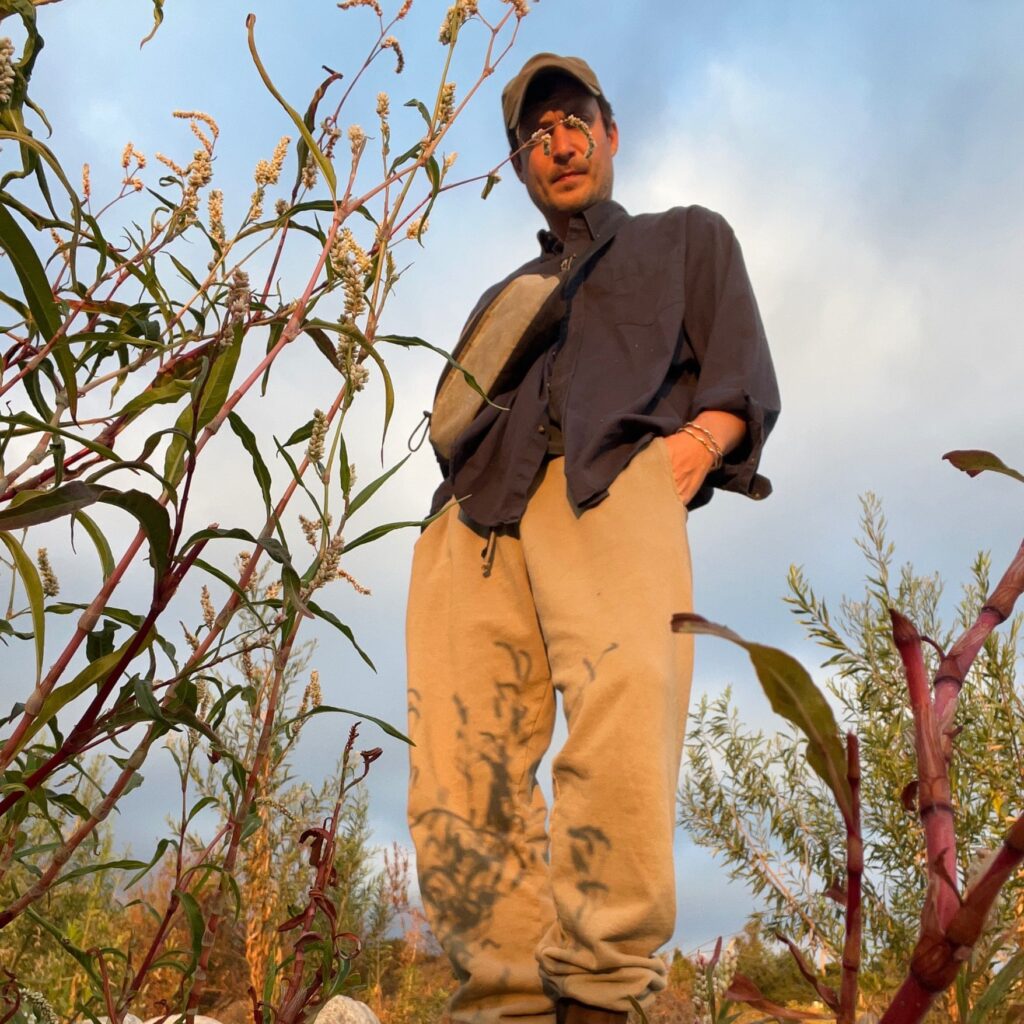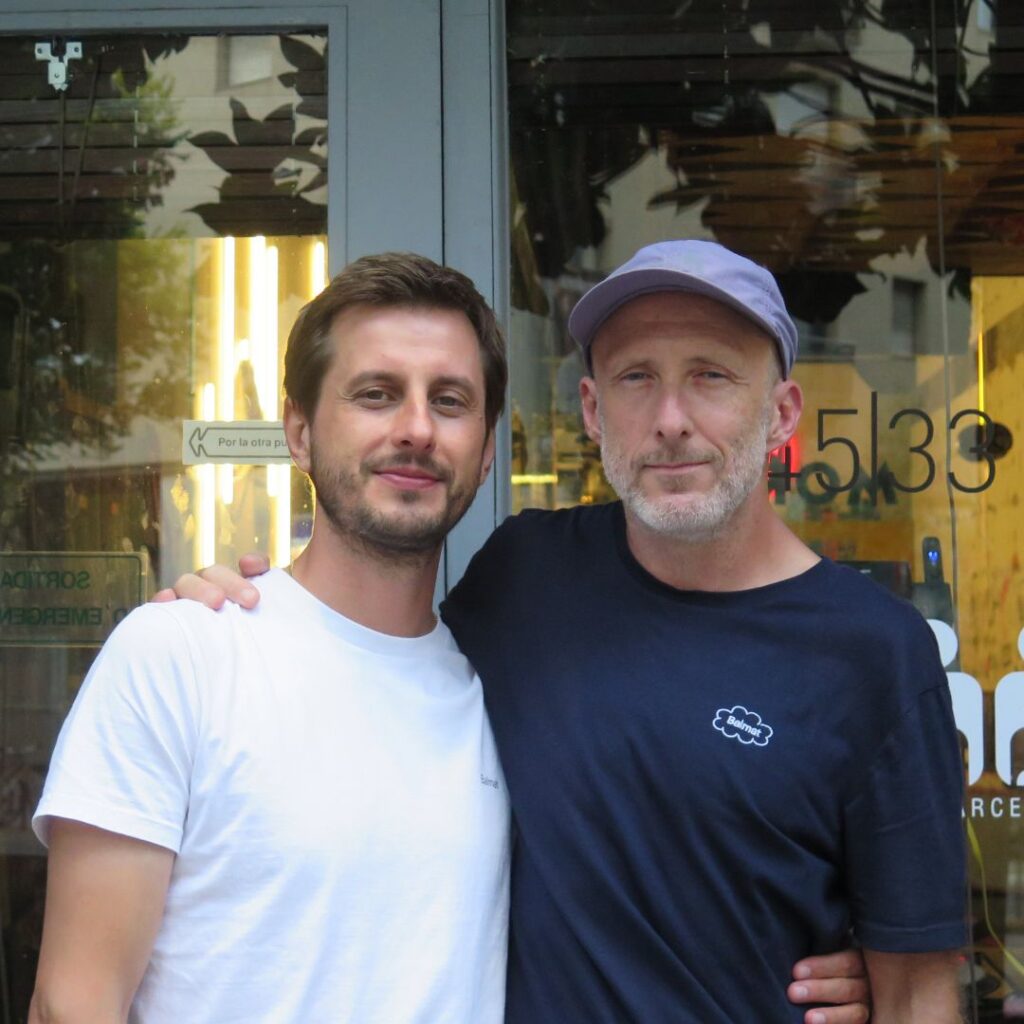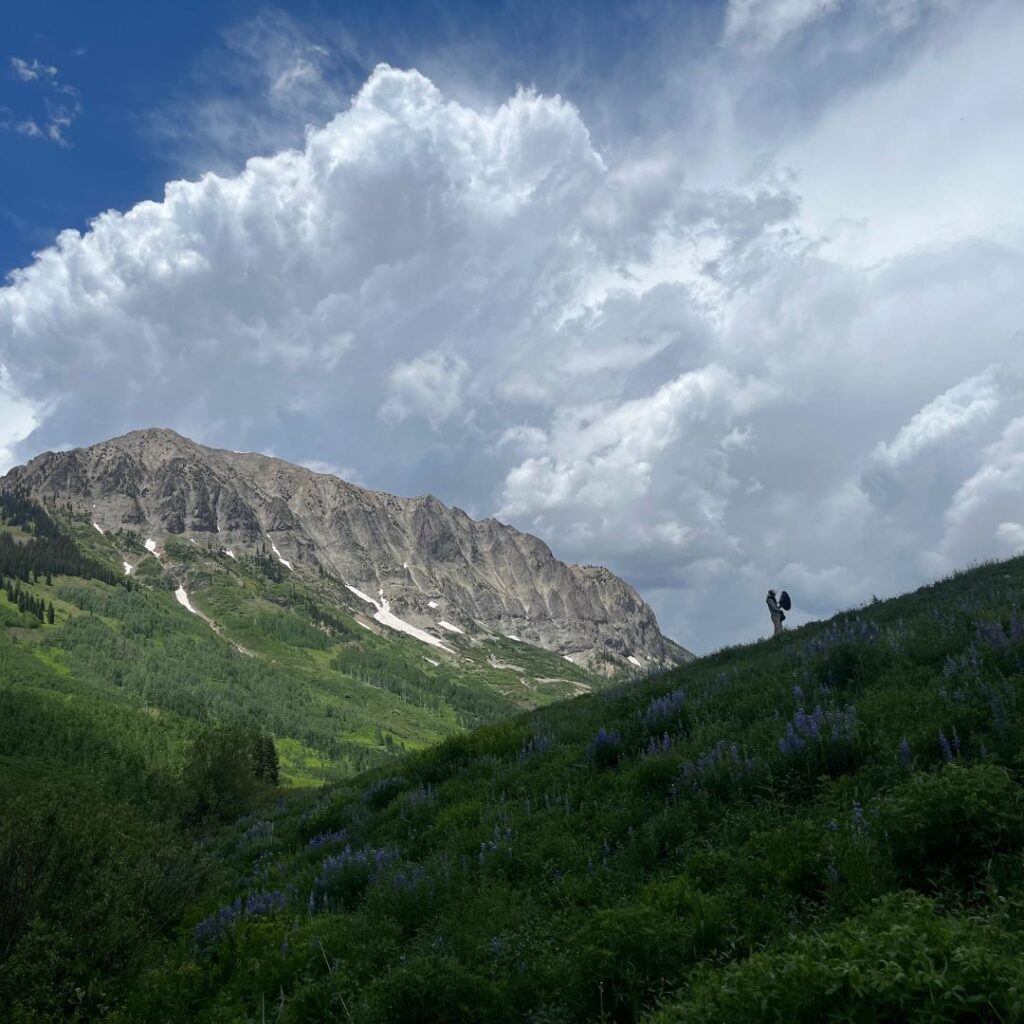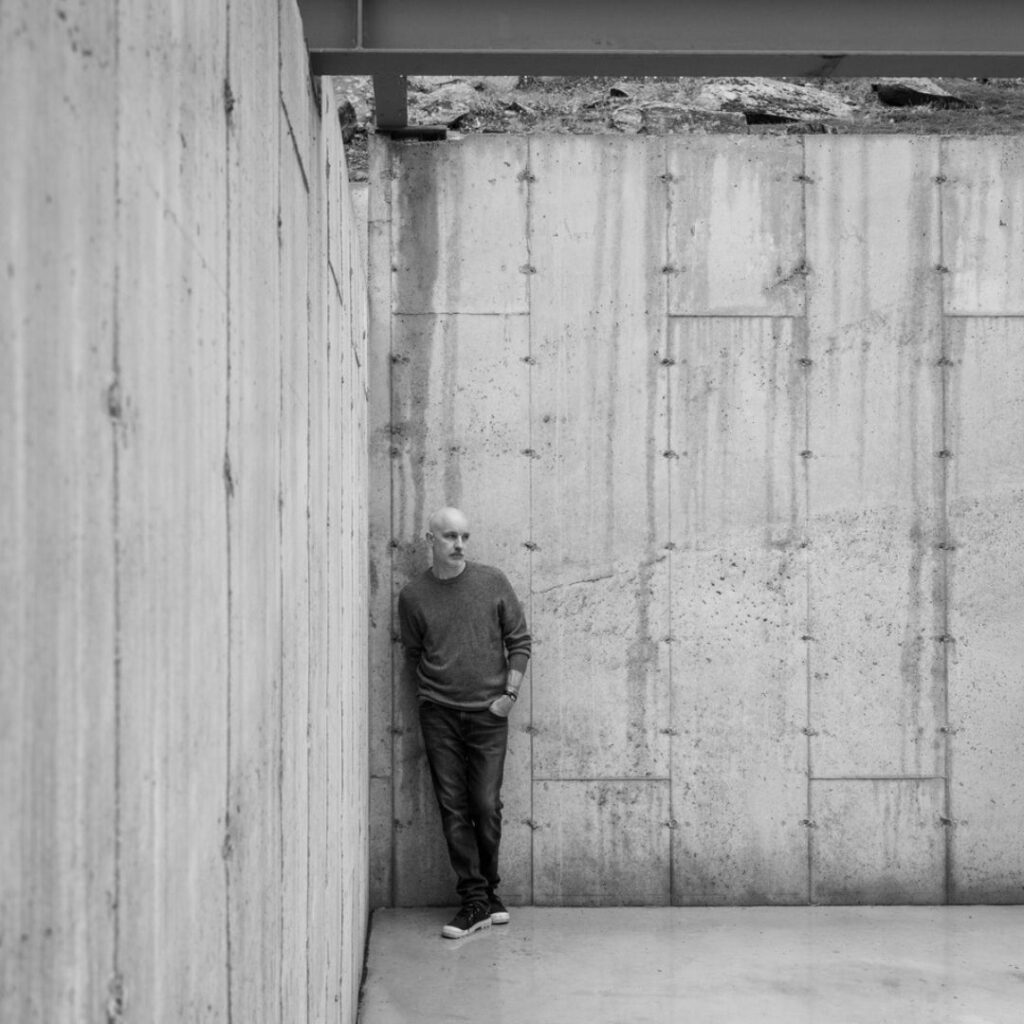Harvesting the sounds of nature with felbm
Like the cycles of the Earth, Felbm’s compositions unfold at their own pace, always moving, yet never in a rush. Documenting the subtle shifts in the seasons, he creates a contemplative space where music isn’t just something we hear, but something we inhabit.
Talking with Eelco reminds us that we, too, are part of nature’s rhythm—continuously evolving and metamorphosing. He offers this perspective not as a lesson, but as something he’s come to accept through surrendering control and letting go.
winterspring/summerfall draws inspiration from the cycles of nature, which is a theme that has appeared before in your work. Where does this interest in the natural world come from?
I was first drawn to this theme about eight years ago, during a period of burnout. That’s when I started taking more walks in nature, noticing the small changes and observing how everything moves in cycles. It sounds cliché, right? But it pushed me to look inward—asking myself, “What’s causing this? What patterns am I repeating that aren’t sustainable or healthy?” That’s how I started recognizing patterns in my behavior and the cycles of life. That was the starting point for cycli infini, my previous album, where I came to understand that everything is always cyclical. That realization kind of stuck with me for this album, too.
The album is based on the Japanese calendar. Can you share more about how it works?
The first key difference is that the seasons don’t begin where they are typically marked in Europe or the Western world. We consider the 21st of March the beginning of spring and the 21st of June the beginning of summer. However, in the Japanese calendar, these dates are actually the midpoints of the seasons. Summer, for example, centers around the longest day, with the period before and after forming the season—which, if you think about it, makes sense, right?
Then there’s a division into six smaller periods, at least in the calendar I follow. In Japan, they have microseasons, dividing time even further—into 72 periods in total. These are three-day periods, but the calendar I use has six periods per season, each lasting about 15 days. I documented these over the course of one year to make winterspring/summerfall.
Do you think in sound, or does it come as a response to other forms of documentation?
I usually make music at the end of each season. I gather material throughout—I take photos, record sounds, write about what’s happening in nature, and sometimes film a little. It’s mostly about taking everything in, so by the end of the season, I have a clear sense of how I can translate it into music. Sometimes I’ll play a little guitar or jot down an idea for a specific moment, but it doesn’t always turn out that way. It’s more about collecting throughout the season and then harvesting it all at the end.
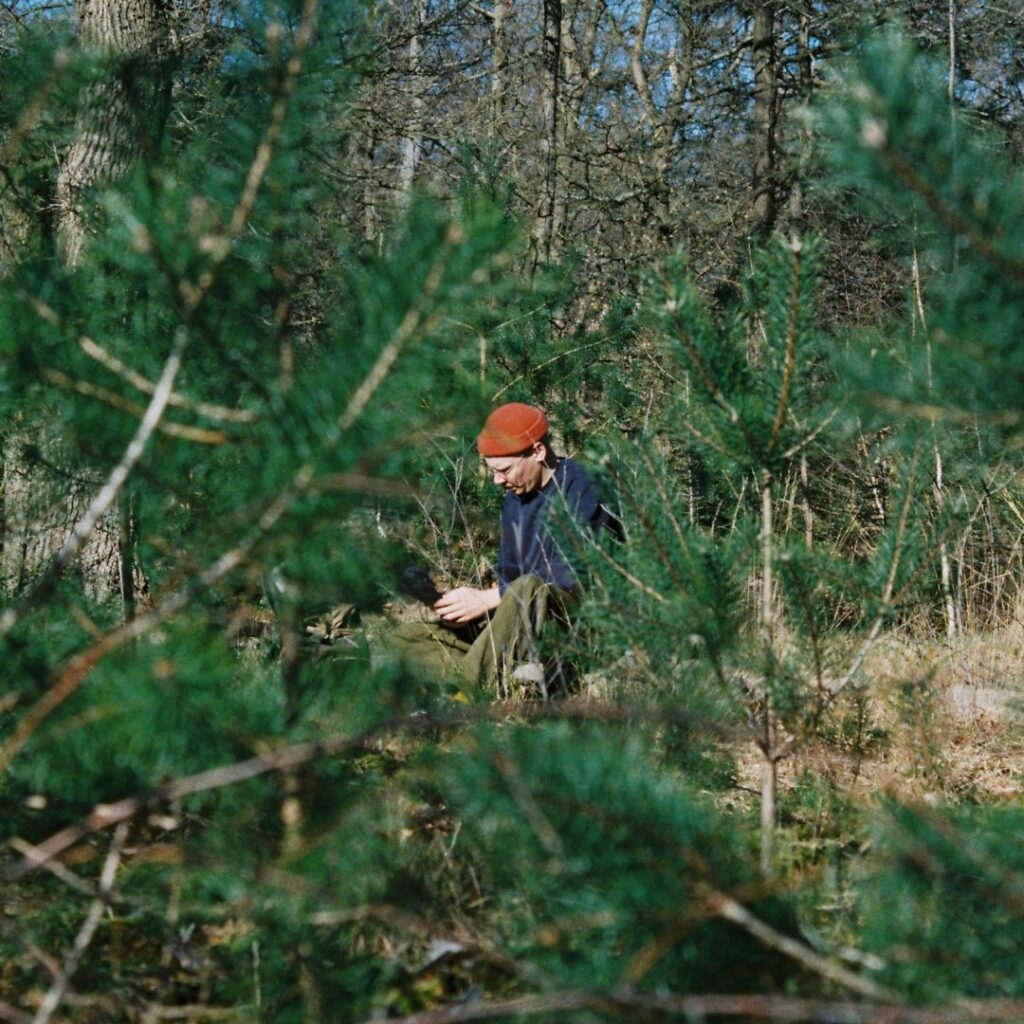
That’s a nice metaphor. Is that your general process for making work, or was it specific to this project?
This is probably the most structured and disciplined I’ve ever been. Normally, my process is more associative, free, and spontaneous. But I’ve been working more and more from a concept, and I like to divide my process into different phases.
I think there needs to be an open, exploratory phase first, where there is room to collect ideas, impressions, and materials. Then there’s the phase where things start becoming concrete—turning ideas into blueprints—and finally, the phase where they become finished works.
Are there other themes that appear in your work, or that you would actively like to explore?
At the moment, my approach is shifting more toward the contemplative aspect—something that can serve as a form of meditation. It’s something that keeps coming back and something I want to create—a space for contemplation through my music. That also parallels my interest in nature, as my time spent outdoors is also about creating space for my mind to meditate and contemplate.
Do you have a desire, then, for your work to be experienced in a similar way, or in a particular environment or frame of mind?
I think creating a space for contemplation or meditation—creating mental space, in a way—is something I aim for. I try to make my music feel pleasant and gentle. I’m interested in the soothing space it can create. Especially with cycli infini, I tried to shape a kind of space or dimension where the listener can really drift off and, you know, be somewhere else for a little while.
I think I long for that space myself, and I also feel like it’s something many might need or could benefit from. It’s not that I make music for that reason, but it’s always in the back of my mind. I try to make it inviting, so it can evoke that feeling.
There’s definitely a relationship between nature and escapism. Or maybe it’s the opposite of escapism—it’s about returning to yourself, in a way. From your experiences, what do you think nature can teach us?
I mean, these things can sound a bit cliché—mindfulness, Buddhism, whatever—but it’s true. Once you see that nature is always changing, you start to realize that everything is always changing. I became very aware of the fact that we’re all just matter, right? In a way, we’re like plants. We came from nature. We are nature. We’re all just matter, evolving, metamorphosing. If something is unpleasant, it will eventually change. Everything is changing all the time. At some point, you stop trying to control it. You just let go and let the process happen.
I feel like I’m just repeating a lot of what I’ve been reading, but it’s only because I really feel it too.

It seems like you read a lot about these topics. Do you have any recommendations?
The first book that comes to mind is Walden by Henry David Thoreau. I read it a long time ago—it’s about the author living in a cottage in nature and reflecting on his life there.
Right now, I’m reading a book about actually living with the seasons, based on the Eastern calendar and its rhythms. I’m not sure yet if I’d recommend it, but it’s quite nice.
I also read a series by Knausgård, a Norwegian writer. He structured it around the seasons—starting with Autumn, then Winter, Spring, and Summer. It seemed like a daily practice for him—writing short pieces, observations, small reflections. That kind of got me thinking in this direction, or at least nudged me toward this idea. Now that I think about it, that series probably influenced this album more than I realized.
You’ve also done a variety of collaborative projects, including G, A & D. How does this way of working compare to your solo practice?
I started out playing in bands, but gradually transitioned to working solo because I just wanted to do my own thing. I’m quite a control freak, which is probably why I ended up with a solo music project. Collaborating requires being open to other people’s input—accepting that you can’t control everything and that it might not turn out exactly as you envisioned.
For me, as a control freak, it’s a great learning experience. It makes you appreciate what others bring to the table. When I make something on my own, I know every detail inside and out. I’m so close to it that I can get bored of it or catch myself repeating the same tricks. But when I collaborate, someone else’s work introduces an element of surprise—something I could never create on my own. And that’s really valuable.
It also makes it easier for me to listen to the music we create together because there’s always an element I don’t fully understand. With my own music, I hear myself so much that, after a while, it’s not as interesting to listen to.
It sounds like you’re drawn to the sense of the unknown in collaboration. Do you still experience that in your solo work? Is there something you’re still searching for?
I think it’s more about wanting to explore a new theme, a new set of instruments, a different space, or a different kind of sound. I’m always searching, always longing for something new. And when it comes to that element of music that feels beyond my grasp—because it comes from someone else’s artistry—I want to keep bringing that into my work.
On winterspring/summerfall, I worked with Nana Adjoa, a bass player, songwriter, and singer. She played double bass, which is something I could never do myself. It’s something I can’t replicate on my own, and I can’t get bored of it because it’s not mine. I think I’ll always try to make space for those kinds of contributions from others.
How would you describe your sound?
That’s probably something best left for others to describe. But if I had to, I’d say… organic. Maybe gentle. Sometimes I call it “instrumental intimism,” which feels fitting because I’m drawn to intimacy in sound. I don’t want to impose on the listener—I want to create an intimate space and invite them in.

You’ve brought up spaces and environments quite a bit. Do you think sound is always a spatial or environmental experience?
Yeah, at least for me, it is. Sound has been my main focus in music for a long time. I used to think of myself more as a producer, but recently, I’ve come to see sound as a projection of space. It comes out of the speakers and creates an environment. If there are a lot of high frequencies, you might imagine a high ceiling or hard walls. And if the sound is more muffled, it gives a rounder, warmer, softer texture—like the walls absorbing it.
I think projecting sound into a dimension inevitably creates a space for the listener. Sometimes that happens on headphones, where the projection is entirely within the listener’s mind. But otherwise, it happens in the room, right? For me, it makes sense to see it that way.
Acoustic elements have been a recurring part of your recent projects. Has that been a conscious choice?
The conscious part is that I choose a specific set of tools for each record. I always decide on the instruments in advance to keep the sound coherent. But at the same time, it’s also unconscious, as it’s just a result of where my interests lie.
For Elements of Nature, since I wanted to make something inspired by nature, I felt I had to use acoustic instruments. For me, it just doesn’t really work to do that with a synthesizer or digital sounds. It doesn’t feel natural, you know? I felt that for my last albums, acoustic instruments were necessary to make the sound a true reflection of nature itself.
I mean, I’m in love with my bamboo flutes—because it’s just bamboo and air. Nothing more.

It sounds like having a clear structure—whether through a defined concept or a specific tool set—is something you enjoy. Are there projects you’d like to explore more in the future?
I’d like to do more residency projects because I’ve realized I really enjoy working on location and within a limited timeframe. I actually like timestamps—capturing a specific period in a way. Setting clear parameters, like “I’ll start here, I’m working in this space, with this tool set, and it has to be finished by then,” makes the process very straightforward, and I enjoy that. And I can usually live with the results.
Elements of Nature is a reflection of a two-week residency. It’s far from perfect, but I still released it because, in the end… it is what it is, right? It’s an honest reflection of that time.
For G, A & D, it also really helped Louis and me to have a fixed time frame of a week. There’s something freeing about just working with what’s available at that moment. It works well for me, and I’d like to shape all my future projects—or at least my next albums—around that idea: defining a location, a tool set, and a dedicated period of time, and then fully committing to it.
That doesn’t sound very control-freak-like to me.
When it comes to making music, I’m not too rigid about accepting what comes out. If I listen back to my earlier work, I have so many thoughts on what I could have done better. But at the same time, I can accept it and embrace the fact that it’s simply what I created at that moment. And I like that—it holds a different kind of value.

